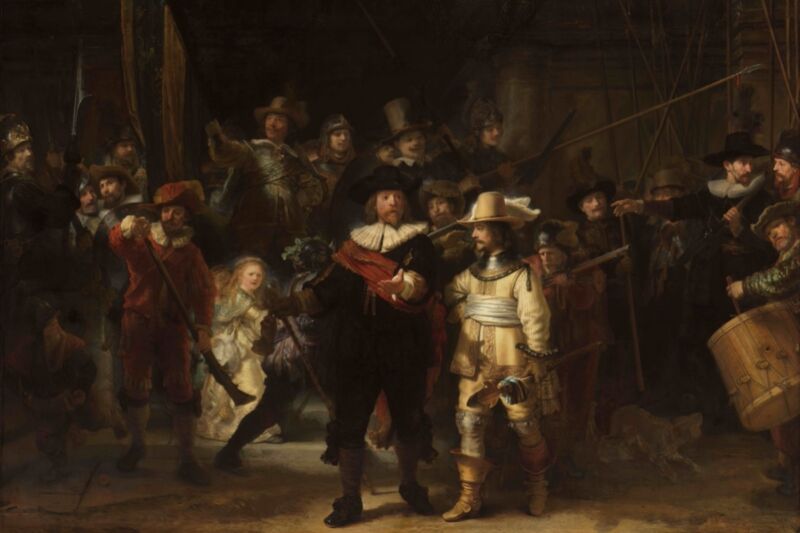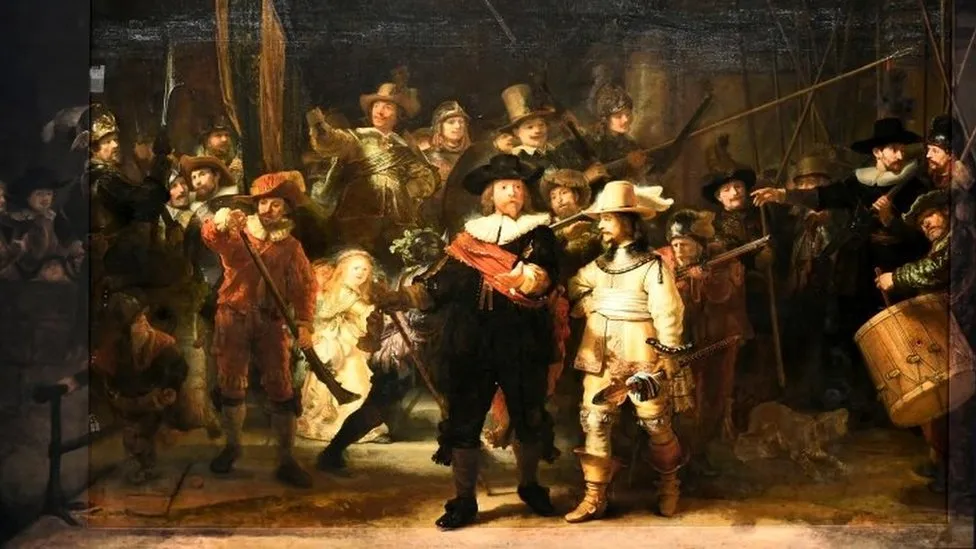
One of the most famous paintings from the Dutch Golden Age is Rembrandt van Rijn's 1642 masterpiece The Night Watch. An interdisciplinary team of researchers has conducted a fresh, in-depth analysis and found rare traces of a compound called lead formate in the painting, according to a recent paper published in the journal Angewandte Chemie. The work was part of the Rijksmuseum's Operation Night Watch, the largest multidisciplinary research and conservation project yet undertaken for Rembrandt's famous painting, devoted to its long-term preservation.
“In Operation Night Watch we focus on Rembrandt’s painting technique, the condition of the painting, and how we can best preserve it for future generations," said Katrien Keune, head of science at Rijksmuseum and professor at the University of Amsterdam (the Netherlands). "The lead formate gives us valuable new clues about the possible use of lead-based oil paint by Rembrandt and the potential impact of oil-based varnishes from past conservation treatments, and the complex chemistry of historic oil paintings.”
Science has become a valuable tool for art conservationists, especially various X-ray imaging methods. For instance, in 2019, we reported on how many of the oil paintings at the Georgia O'Keeffe Museum in Santa Fe, New Mexico, had been developing tiny, pin-sized blisters, almost like acne, for decades. Conservationists and scholars initially assumed the blemishes were grains of sand trapped in the paint. Chemists concluded that the blisters are actually metal carboxylate soaps, the result of a chemical reaction between metal ions in the lead and zinc pigments and fatty acids in the binding medium used in the paint. The soaps start to clump together to form the blisters and migrate through the paint film.
Conservators have found similar deterioration in oil-based masterpieces across all time periods, including in works by Rembrandt. For instance, the Metropolitan Museum of Art in New York City has an ongoing project to determine the causes and mechanisms of metal soap formations on traditional oil paintings; it is collaborating with scientists at Brookhaven National Laboratory to analyze samples using nuclear magnetic resonance spectroscopy and synchrotron-based X-ray methods.
In 2020, scientists analyzed Edvard Munch's The Scream (which was showing alarming signs of degradation) and concluded the damage was not the result of exposure to light, but humidity—specifically, from the breath of museum visitors, perhaps as they lean in to take a closer look at the master's brushstrokes. In March 2022, scientists studied the deterioration of Jean-Baptiste-Camille Corot's Gypsy Woman with Mandolin (circa 1870). They used three complementary techniques to analyze paint samples under infrared light to determine the composition of the damaging metal carboxylate soaps that had formed on the top layer of paint.



3175x175(CURRENT).thumb.jpg.b05acc060982b36f5891ba728e6d953c.jpg)

Recommended Comments
There are no comments to display.
Join the conversation
You can post now and register later. If you have an account, sign in now to post with your account.
Note: Your post will require moderator approval before it will be visible.